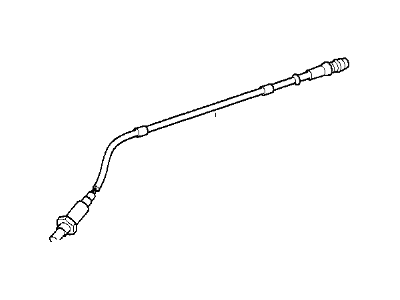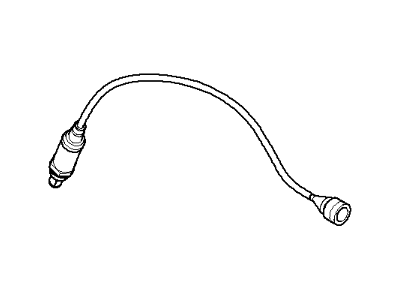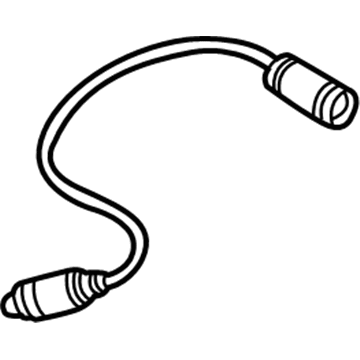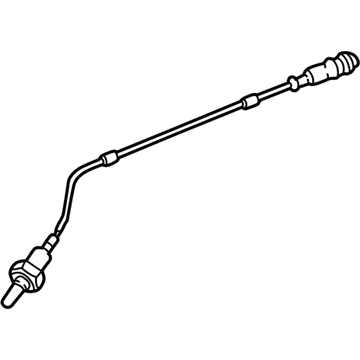×
- Hello
- Login or Register
- Quick Links
- Live Chat
- Track Order
- Parts Availability
- RMA
- Help Center
- Contact Us
- Shop for
- BMW Parts
- BMW Accessories

My Garage
My Account
Cart
Genuine BMW Z3 Oxygen Sensor
Oxygen O2 Sensor- Select Vehicle by Model
- Select Vehicle by VIN
Select Vehicle by Model
orSeries
Model
Year
Select Vehicle by VIN
For the most accurate results, select vehicle by your VIN (Vehicle Identification Number).
6 Oxygen Sensors found
BMW Z3 Heated Oxygen Sensor Air Fuel Ratio Sensor
Part Number: 11781427884$327.47 MSRP: $445.03You Save: $117.56 (27%)Ships in 1-3 Business DaysBMW Z3 Front Or Rear Upstream Oxygen Sensor
Part Number: 11781742050$359.85 MSRP: $489.03You Save: $129.18 (27%)Ships in 1-3 Business DaysBMW Z3 Oxygen Sensor
Part Number: 11781433940$297.84 MSRP: $404.76You Save: $106.92 (27%)Ships in 1-3 Business DaysBMW Z3 Oxygen Sensor - Front
Part Number: 11781247406$297.84 MSRP: $404.76You Save: $106.92 (27%)Ships in 1-3 Business DaysBMW Z3 Oxygen Sensor
Part Number: 11781433071$297.84 MSRP: $404.76You Save: $106.92 (27%)Ships in 1-3 Business DaysBMW Z3 Oxygen Sensor Rear
Part Number: 11781743996$297.84 MSRP: $404.76You Save: $106.92 (27%)Ships in 1-3 Business Days
BMW Z3 Oxygen Sensor
The Oxygen Sensor of BMW Z3 is very important tool of the specific car model as it is responsible for the measurement of the air/fuel mixture in the engine exhaust in order to make the necessary refinement in its efficiency and minimal emission. The oxygen content in the exhaust is compared with the oxygen content in the atmosphere and the sensor produces the voltage signal defining the richness of the mixture. This feedback lets the engine control computer adjust the fuel injector pulse width to match the efficiency of the catalytic converter and to keep emissions levels down. The sensor most a layer of zirconium dioxide with a layer of platinum, works at high temperature and is provided with heater to achieve rapid response time. Some of the newer models may also use an air fuel ration sensor which is broader with more settings to enhance fueling. In essence, proper upkeep of the oxygen sensor should be done frequently to avoid high emission and fuel rates, as well as poor engine performance.
If you are looking for OEM BMW Z3 Oxygen Sensor, we highly recommend to shop with us. Not only do we offer budget friendly prices, but we also provide fast delivery. In addition, we have a hassle-free return policy on all genuine BMW Z3 Oxygen Sensor that come backed by the manufacturer's warranty.
BMW Z3 Oxygen Sensor Parts Questions & Experts Answers
- Q: How to test the OBO I and OBO II oxygen sensors on BMW Z3?A:Both OBO I and OBO II systems utilize an Oxygen (02) sensor upstream from the catalytic converter to monitor the fuel mixture. OBO II systems also have a Heated Oxygen (H02) sensor located before and after the catalytic converter. The advantage of the H02 sensor is its ability to reach operating temperature quickly, allowing the Engine Control Module (ECM) to control fuel injection more efficiently and reduce emissions. The post catalytic converter H02 sensor is used to monitor the pre catalytic converter H02 sensor. These sensors compare the oxygen content of outside air with the oxygen content in the exhaust gases and generate a voltage signal for the ECM. The voltage signal ranges from 0.6 to 0.9 volts for a rich mixture and 0.0 to 0.3 volts for a lean mixture. Fluctuations in voltage occur during the transition from rich to lean or lean to rich. If the voltage fails to fluctuate or the sensor response is slow, potential causes include blocked sensor tip openings, thermal overload, silicone contamination, fuel contamination, improper electrical terminal resistance, inoperative oxygen sensor heater, ECM control switch off, or damage from electrical contact cleaner. To test the sensors, a BMW service tester or suitable Data Scan Tool can be used, or a digital volt/ohmmeter can be used to check component values. The 02 sensor voltage should continuously fluctuate between 0.1-9 volts for Bosch sensors and 0.1-4.9 volts for Siemens sensors. To check the sensor response to lean or rich mixtures, create an air leak or increase fuel pressure respectively. To test the Bosch HO2/02 sensor, allow the engine to reach normal operating temperature, raise the vehicle, and probe pin Nos. 1 and 2 of the sensor's electrical connector with a digital volt meter. The voltage should fluctuate within a couple of minutes. If not, check the sensor heating circuit or replace the sensor if it lacks a heater circuit. For vehicles with Heated Oxygen sensors, check the heater circuit and element by measuring resistance and checking for battery voltage between terminal Nos. 3 and 4. If necessary, replace the sensor or check the wiring and heater relay. When removing and installing the Oxygen sensor, avoid using sealants containing silicone in the intake area as it can damage the sensor. Additionally, avoid using electrical contact cleaner near the H02 sensor harness electrical connector to prevent corrosion damage.


















